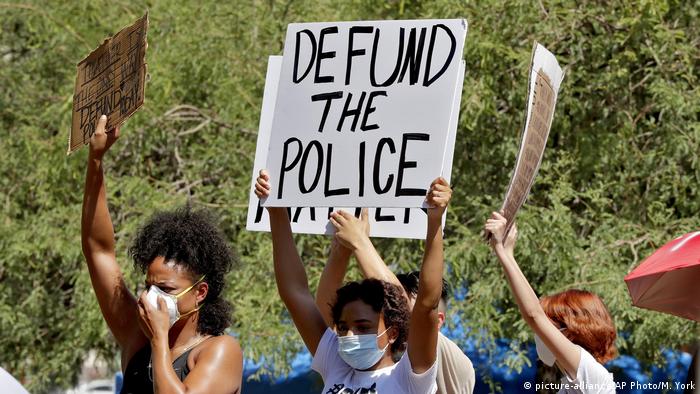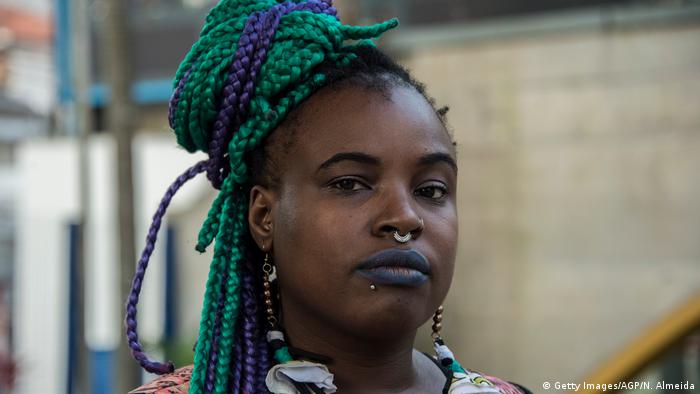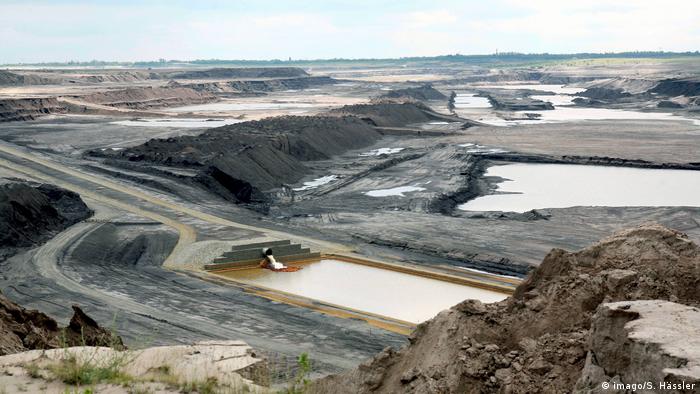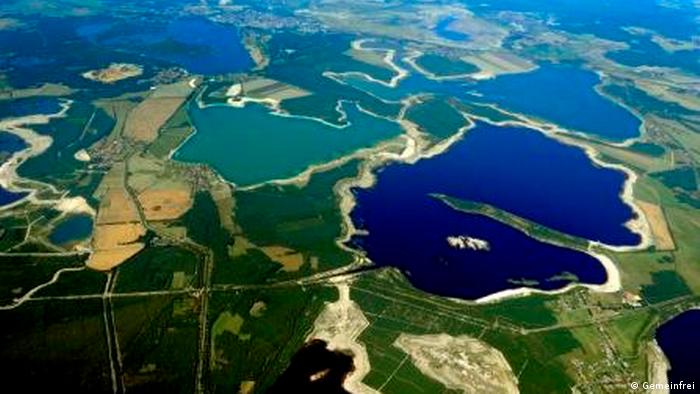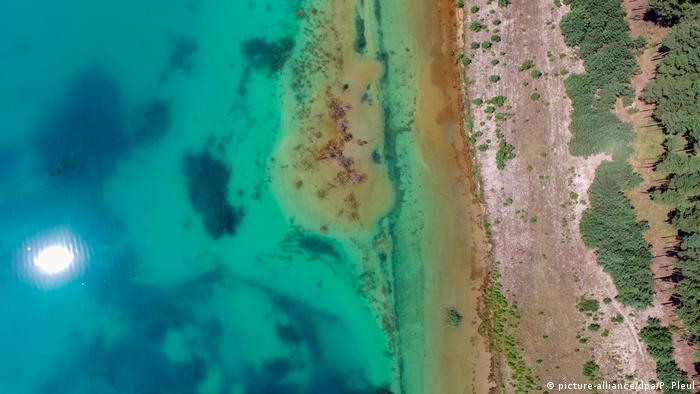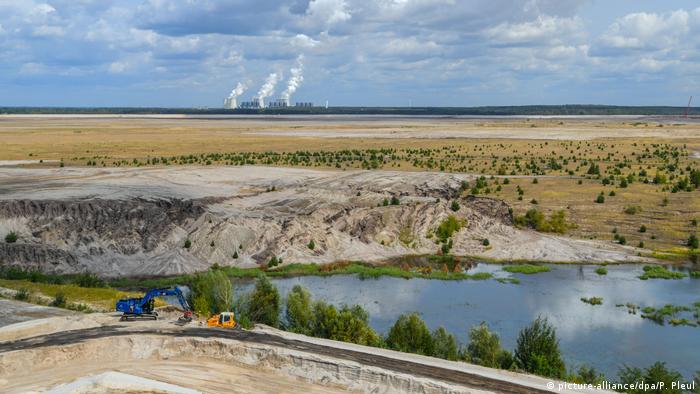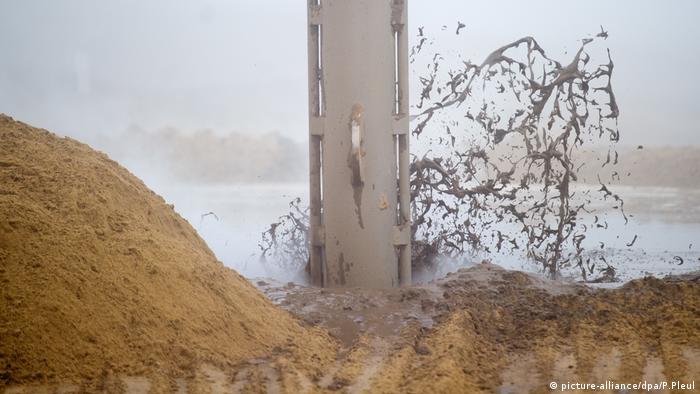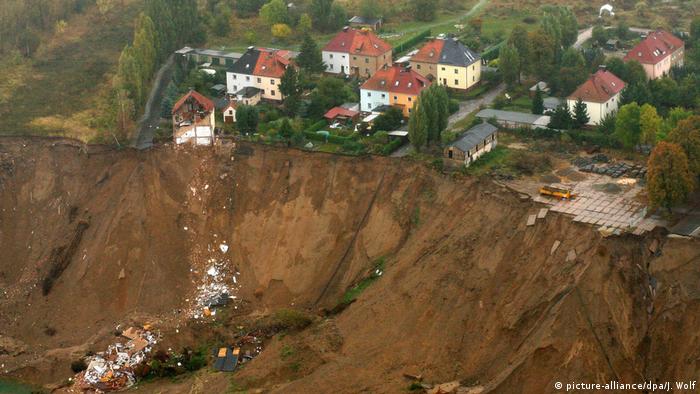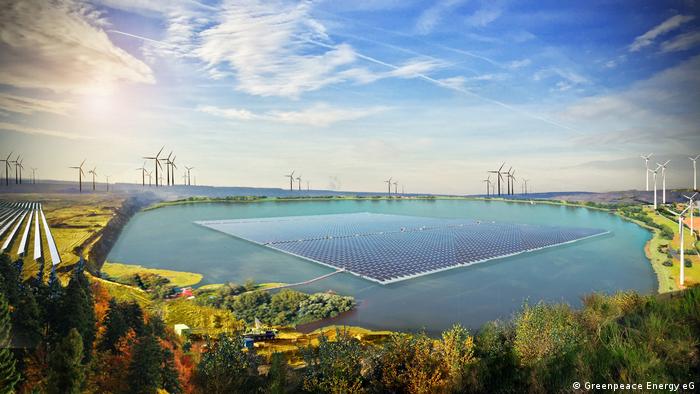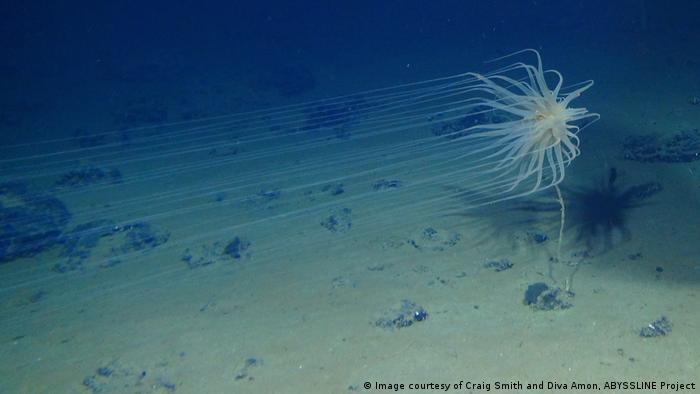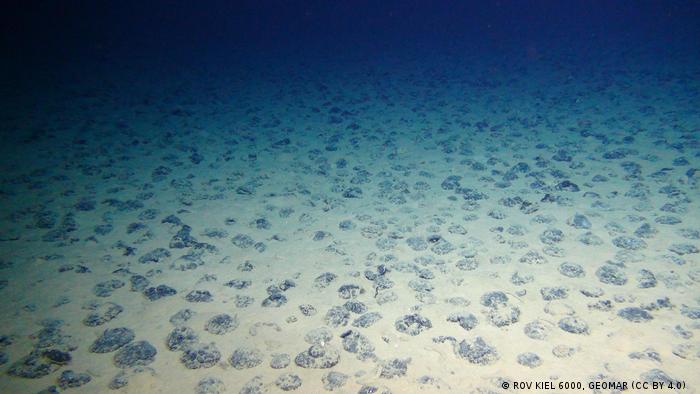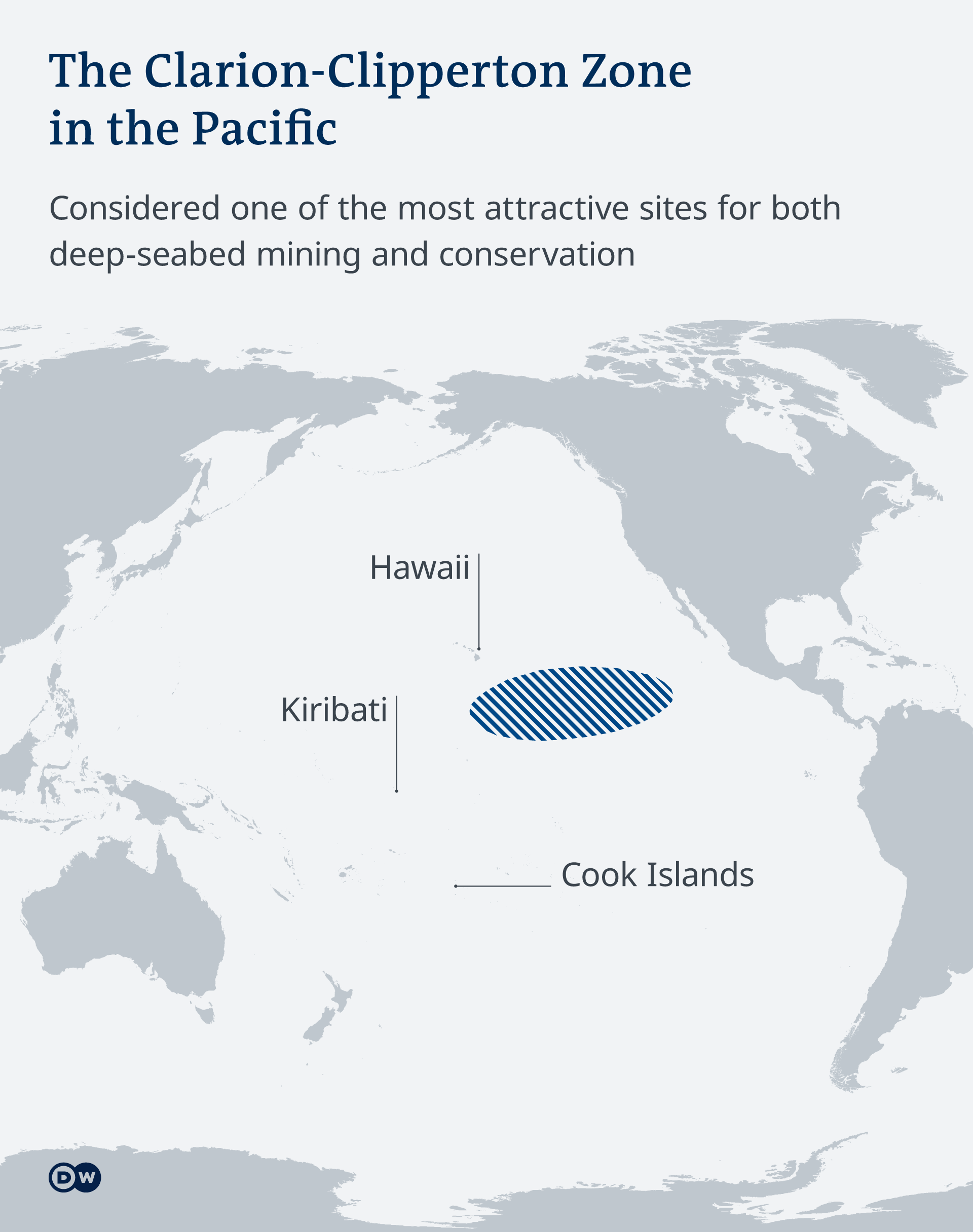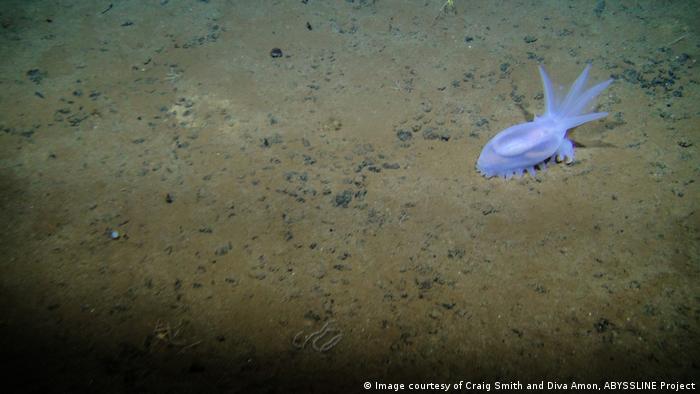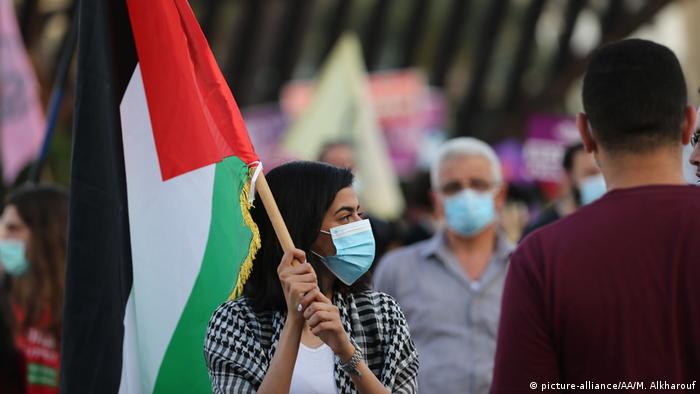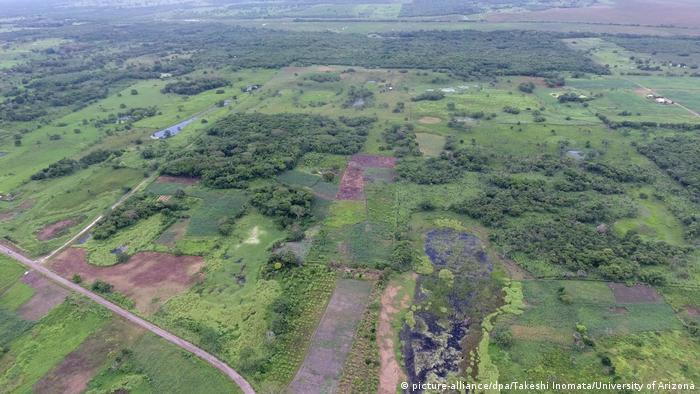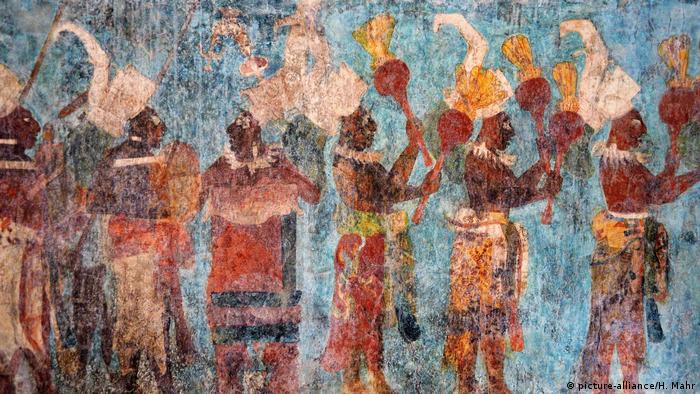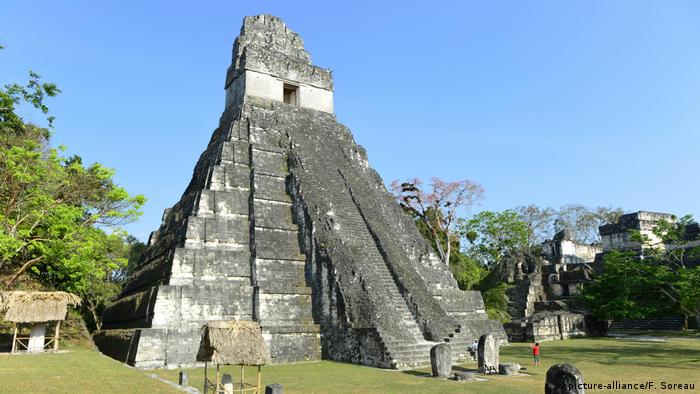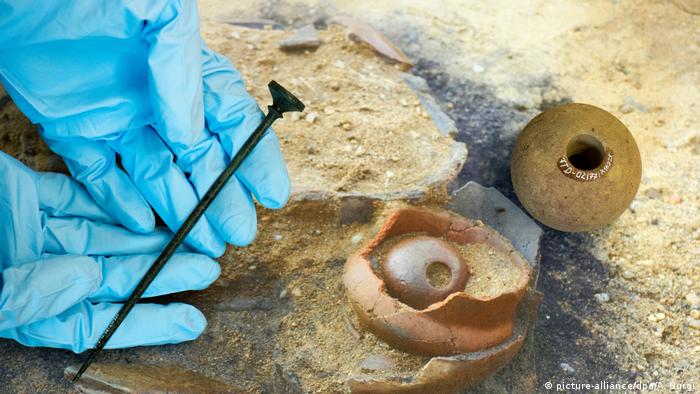Germany struggles to face its own police racism
The killing of George Floyd in the US has put extra scrutiny on structural racism in the police. Activists in Germany are now renewing calls to address cases of police brutality in the force.
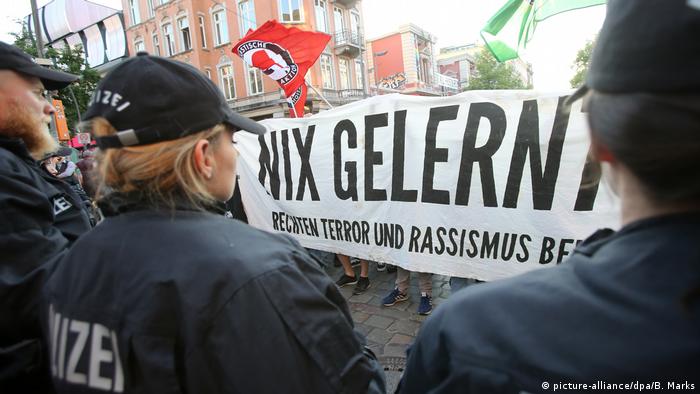
As riots triggered by the death of George Floyd spread across the US, many activists in Germany want the police to face its own accusations of racist violence. Several people of color have been killed by police or died in custody in the last 20 years — the most well-known being
Sierra Leonean asylum-seeker Oury Jalloh, whose burned body was found in a police cell in Dessau in 2005.
And there have been many others: From Cameroonian asylum-seeker Achidi John, who died after being forced to take emetics, a drug that causes vomiting, while in custody in Hamburg in 2001, to Hussam Hussein, an Iraqi refugee who was shot dead outside a refugee home in Berlin in 2016.
Read more:
Germany battles over the N-wordEveryday experience
These cases might have scandalized many, but for black people in Germany they are simply deadly examples of racial profiling they face every day, even though that has long been officially banned. "The African community has never had the experience that the police is there to protect them," said Sylvie Nantcha, founder and head of The African Network of Germany (TANG). "Rather they have the impression that the police is there to suspect them."

Sylvie Nantcha is a member of the CDU
Nantcha, a member of Angela Merkel's Christian Democratic Union (CDU) party and once the first African German city council member in the southern city of Freiburg, has heard countless stories of racial profiling from members of her organization.
"We know that our people are checked by the police more than they should be," she said. "The other day a colleague of mine said he was on a train and the police walked past a hundred people and stopped by him and asked for his ID. It happens every day." But the police do not keep official records of these incidents, which means, Nantcha added, the issue is never properly assessed.
That was confirmed by Sebastian Bickerich, spokesman for the German government's Anti-Discrimination Agency, who said the country lacked both "systematic gathering of racial profiling cases and clearly defined jurisdictions and complaint structures."
Read more:
What's life really like for black people in Germany? 'Rotten apples' or endemic problem

Asylum-seeker Oury Jalloh died in a prison cell in 2005
Day-to-day policing in Germany is the responsibility of the states, each of which have their own recruitment and training programs, as well as their own laws. Some — mainly in the western German states — have already made an effort to recruit more people of immigrant background into the force.
Berlin, for its part, has just passed a new anti-discrimination law that covers all state authorities including the police, and which for the first time allows people to sue for compensation if they are discriminated against.
But the federal government still appears to have a blind spot about racial profiling. At a press conference this week, Federal Interior Ministry spokesman Steve Alter, while acknowledging that the police do not collect numbers, insisted racial profiling is not a problem in the police force "as a whole." "These are, to my knowledge, individual cases, when measured against the size of the organization," he told a Deutschlandfunk public radio reporter. "Nevertheless, every individual case is taken seriously and included in the structural reappraisal."
The police unions, which like to make more politicized statements on policing, are defensive about suggestions of endemic racism in the ranks. Jörg Radek, deputy chairman of the GdP police union, told the Tagesspiegel newspaper on Wednesday that anyone accusing the German police of "latent or structural racism" was either "showing serious gaps in their knowledge about how the police works, or is trying, from the point of view of the GdP, to exploit the measured response of forces for party political purposes."
Read more:
German authorities' many failures in investigating the NSU
But despite resistance from the unions, Rafael Behr, a former police officer and now a professor at the Hamburg Police Academy, said the police itself was shifting its perception away from the "rotten apples" argument. "Because these individual cases have indeed mounted up so much that there are more and more concerns about where the structural or institutional conditions are that might support those cases," he told DW.
"I wouldn't say that the German police are institutionally racist, but I would say that there are structural and institutional conditions that don't stop racism," he argued. "And not bringing up this issue was until now the biggest shortcoming of Germany's police leadership."
'Racist human rights violations'
The Interior Ministry also pointed to official complaint channels about police action — but black activist groups have argued for years that these are themselves biased.
"State prosecutors tend to believe the police, rather than private citizens," Tahir Della, spokesman for the Initiative of Black People in Germany (ISD), told DW. "We need legal leverage. We need independent complaint structures where we can intervene, and where people can be called to account. We need protection from racist human-rights violations. At the moment I have to complain about the police to the police." This is the gap that the new Berlin law is meant to close — and it has already been welcomed by activist groups and is being vehemently opposed by the GdP police union.
Read more:
Berlin police recruits must 'learn German before English'But for Della, it would only be a vital first step, which would allow Germany to address the larger issue: how the police is educated.
That is Rafael Behr's job at the Hamburg Police Academy. He doesn't believe the police attract a disproportionate number of racists among new recruits, but he does think the three-year training that cadets go through needs to include more political and anti-discrimination training — and that should continue later. "We let them out of the academies and leave them to practical experience that we can no longer control," he said. "That's the big gap — there should be a continuation of education during the practical experience, maybe through feedback groups or supervision groups."
Some police forces, such as in Saxony-Anhalt, the state where Oury Jalloh died, say they now explicitly address "prejudice-led attitudes and actions" by police officers and the "related flawed culture" in the force during training.
For Sylvie Nantcha, meanwhile, structural racism in the police is just part of a bigger societal problem. "We Africans have a second generation of people here now," said Nantcha. "They're Germans. They don't have any other home. They just want to be recognized as part of this country. That's their simple demand."
DW RECOMMENDS
US companies stand up for racial justice
Since the killing of George Floyd and the eruption of mass protests across the US, companies have begun expressing solidarity with the Black Lives Matter movement. Critics have accused them of jumping on the bandwagon. (04.06.2020)
Bayern Munich's Jerome Boateng: 'No child is born a racist'
Following the killing of George Floyd, Bundesliga players have spoken out against racism. German footballer Jerome Boateng talked to DW about the importance of education and the room for more support. (04.06.2020)
Carnival party in Bavaria sparks racism debate in Germany
A charity ball in a Bavarian village has launched a debate in Germany over the use of a derogatory term for black people. Locals have defended it as "a normal term" in Bavaria's dialect, while critics say it's offensive. (23.02.2017)
Should books with racist content be revised?
While somtimes only simple textual changes are needed to update a classic, removing racist slurs does not always eliminate ideologies of the past. Here are some examples that show how revising books is a delicate affair. (10.04.2018) Date 05.06.2020
Author Ben Knight
Related Subjects
DiscriminationKeywords
racism,
George Floyd,
police,
discriminationPermalink
https://p.dw.com/p/3dIgi





